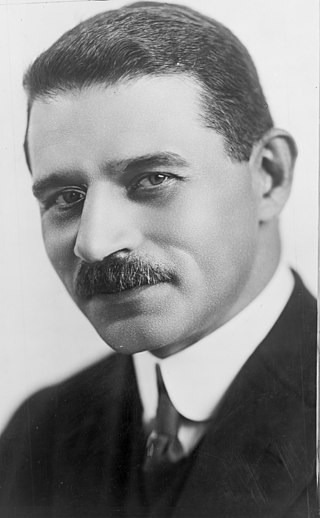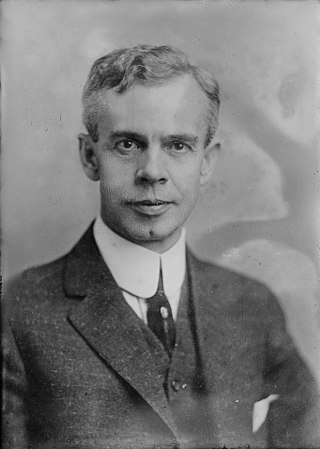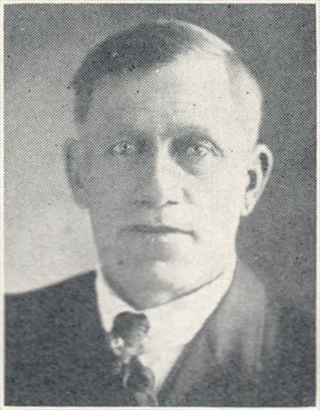
The Socialist Party of America (SPA) was a socialist political party in the United States formed in 1901 by a merger between the three-year-old Social Democratic Party of America and disaffected elements of the Socialist Labor Party of America who had split from the main organization in 1899.

David Stuart Rose was an American lawyer and Democratic politician.

Emil Seidel was an American politician. Seidel was the mayor of Milwaukee from 1910 to 1912. The first Socialist mayor of a major city in the United States, Seidel became the vice presidential candidate for the Socialist Party of America in the 1912 presidential election.

Frank Paul Zeidler was an American socialist politician and mayor of Milwaukee, Wisconsin, serving three terms from April 20, 1948, to April 18, 1960. Zeidler, a member of the Socialist Party of America, is the most recent Socialist Party candidate to be elected mayor of a large American city.

Norman Mattoon Thomas was an American Presbyterian minister, political activist, and perennial candidate for president. He achieved fame as a socialist and pacifist, and was the Socialist Party of America's candidate for president in six consecutive elections between 1928 and 1948.

Victor Luitpold Berger was an Austrian–American socialist politician and journalist who was a founding member of the Social Democratic Party of America and its successor, the Socialist Party of America. Born in the Austrian Empire, Berger immigrated to the United States as a young man and became an important and influential socialist journalist in Wisconsin. He helped establish the so-called Sewer Socialist movement, but also sparked the American Socialist Party's nativist turn. In 1910, he was elected as the first Socialist to the U.S. House of Representatives, representing a district in Milwaukee, Wisconsin.

Morris Hillquit was a founder and leader of the Socialist Party of America and prominent labor lawyer in New York City's Lower East Side. Together with Eugene V. Debs and Congressman Victor L. Berger, Hillquit was one of the leading public faces of American socialism during the first two decades of the 20th century.

Henry Walter Maier was an American politician and the longest-serving mayor of Milwaukee, Wisconsin, holding office from 1960 to 1988. A Democrat, Maier was a powerful and controversial figure, presiding over an era of economic and political turbulence for the city of Milwaukee.

Gerhard Adolph Bading was an American physician, politician, and diplomat. Bading is best remembered as the 31st mayor of Milwaukee, Wisconsin, serving from 1912 to 1916. Bading also served as U.S. Envoy and an Ambassador Extraordinary to Ecuador from 1922 until his retirement in 1930.
Sewer socialism refers to the American socialist movement that centered in Milwaukee, Wisconsin, from around 1892 to 1960. The moniker was coined by Morris Hillquit at the 1932 Milwaukee convention of the Socialist Party of America as a commentary on the Milwaukee socialists and their perpetual boasting about the excellent public sewer system in the city.

The municipal government of the U.S. city of Milwaukee, located in the state of Wisconsin, consists of a mayor and common council. Traditionally supporting progressive politicians and movements, this community has consistently proved to be a stronghold of the Democratic Party. As the largest city in Wisconsin, Milwaukee receives a significant amount of attention during elections.

The 1917 New York City mayoral election was held on November 6, 1917. Incumbent mayor John P. Mitchel, a reform Democrat running on the Fusion Party ticket, was defeated for re-election by Judge John Francis Hylan, supported by Tammany Hall and William Randolph Hearst.

Benjamin Hanford was an American socialist politician during the late 19th and early 20th centuries. A printer by trade, Hanford is best remembered for his 1904 and 1908 runs for Vice President of the United States on the ticket of the Socialist Party of America, running next to Presidential nominee Eugene V. Debs. Hanford was also the creator of the fictional character "Jimmie Higgins," a prototypical Socialist rank-and-filer whose silent work on the unglamorous tasks needed by any political organization made the group's achievements possible — a character later reprised in a novel by Upton Sinclair.

Labor Party was the name or partial name of a number of United States political parties which were organized during the 1870s and 1880s.

George A. Nelson was an American dairy farmer, farm organization leader, and socialist politician. He is best remembered as the 1936 candidate of the Socialist Party of America for Vice President of the United States. He previously served as the 50th speaker of the Wisconsin State Assembly, and represented Polk County in the Assembly for three terms.

John McClelland Work (1869–1961) was an American socialist writer, lecturer, activist, and political functionary. Work is best remembered as a founding member of the Socialist Party of America and as the author of one of its best-selling propaganda tracts of the first decade of the 20th century. He was also the executive secretary of the Socialist Party of America from 1911 to 1913 and a frequent candidate for public office on its ticket.

The Social-Democratic Party of Wisconsin (SDPW) was established in 1897 as the Wisconsin state affiliate of the Chicago faction of the Social Democratic Party of America. When that organization merged in 1901 to form a political party known as the Socialist Party of America, the Social-Democratic Party of Wisconsin became the state affiliate of that organization, retaining its original name. For most of its 75 years, the Social-Democratic Party of Wisconsin was the state affiliate of the Socialist Party of America, established in 1901. The party was one of the largest state organizations which together comprised the Socialist Party of America.

Paul Grottkau (1846–1898) was a German-American socialist political activist and newspaper publisher. Grottkau is best remembered as an editor alongside Haymarket affair victim August Spies of the Chicagoer Arbeiter-Zeitung, one of the leading American radical newspapers of the decade of the 1880s. Later moving to Milwaukee, Grottkau became one of the leading luminaries of the socialist movement in Wisconsin.

The Socialist Labor Party (SLP) is a political party in the United States. It was established in 1876, and was the first socialist party formed in the country.

The 1921 New York City mayoral election took place on November 8, 1921, resulting in a victory for Democratic Party candidate John Francis Hylan.




















